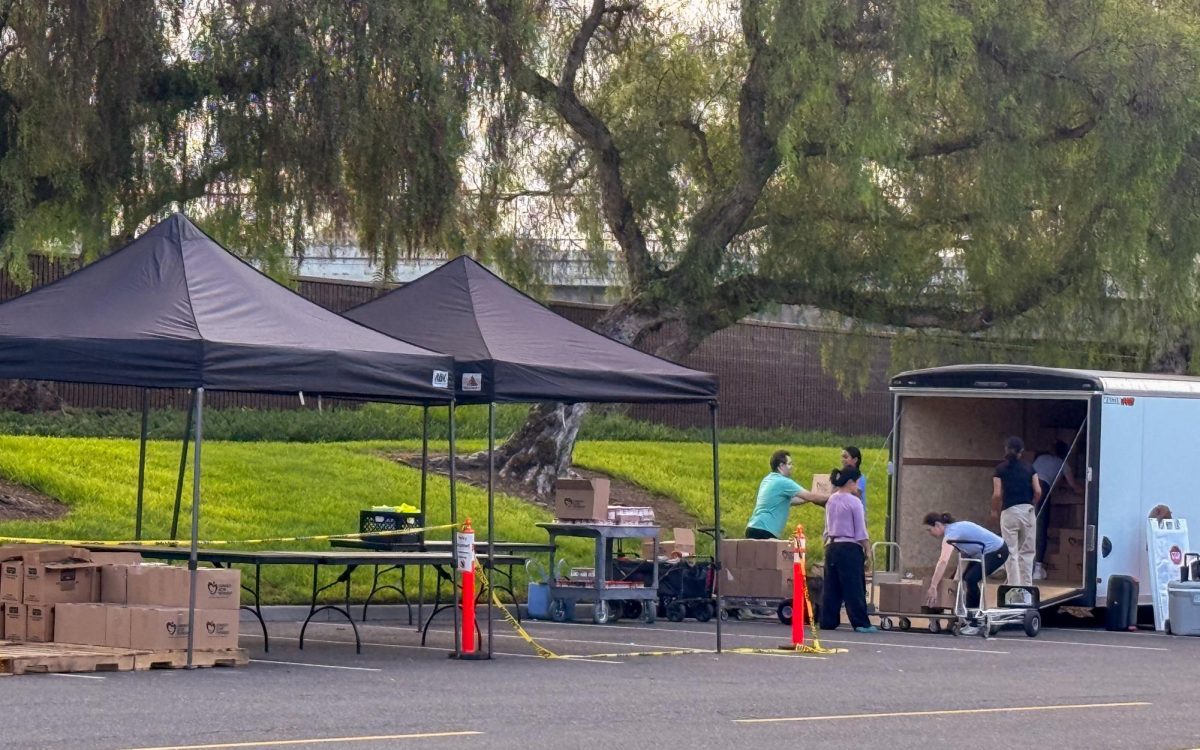Volunteers for Irvine’s Food Security Program distributed 400 boxes of food to over 330 households this August in a month-long initiative at the Heritage Community Center. Since its launch in March, the program’s reach has tripled, with volunteers assisting in tasks such as food box preparation and distribution.
In partnership with the Community Action Partnership of Orange County (CAPOC), the City of Irvine has introduced a Food Security Volunteer Program that provides free food boxes to all eligible Irvine residents. The initiative addresses a growing need among community members facing food insecurity, according to Health & wellness analyst and program overseer Mackenzie Walters.
“Irvine has very high rent prices, so when a majority of paychecks are going to rent or to children’s clothing or whatever it may be, there’s not so much leftover over for food,” Walters said. “We’re just trying to lift somewhat of a financial barrier for people [so] that they don’t have to worry about it.”
According to management analyst and lead volunteer Ashley Chapman, the range of the program’s involvement provides volunteers with a fuller understanding of how food distribution programs operate.
“You do really get to see various parts of this process, like [receiving] risky food. We don’t always take [the food],” Chapman said,“ Other times, volunteer opportunities can be a bit more behind the scenes, but this is really seeing that packaging from start to finish. Being able to put a food box into someone’s car and send them on their way. I think it’s really cool that [volunteers] can be directly interfacing in that way.”
The Food Security Program offers four different volunteer opportunities for individuals to participate in. Volunteers can participate in any part of the process, whether that involves helping out with one event or attending all of them, according to Walters.
“There’s a day when Community Action Partnership brings pallets of food, 400 boxes’ worth, to Heritage Park Community Center,” Walters said, “Volunteers help unload and store the food in our trailer. That’s our first volunteer opportunity, and we call that drop-off day. We then have volunteers who take the food from the trailer so that the middle school youth action team can come and put the food into boxes. That’s food assembly preparation day. For our third and fourth volunteer opportunities, volunteers help load boxes into cars or deliver boxes to those unable to come to distribution; that’s distribution and drop-off day.”
In a report by the USDA, food insecurity has been steadily rising across the United States since the pandemic. In response, the program aims to address local challenges through community engagement, encouraging more residents and families to join in tackling hunger. The program also hopes to strengthen community involvement by exploring ways to incorporate more local students alongside adult volunteers, according to Walters.




